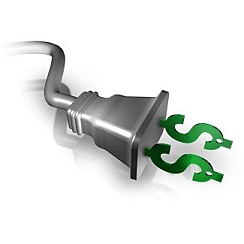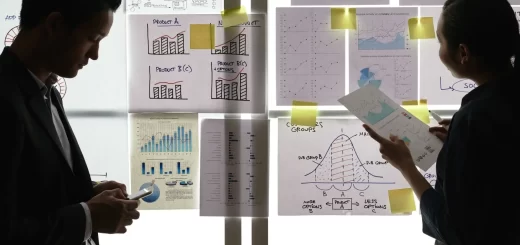How to Prepare a Project Budget in Three Generic Steps
 Preparing the budget for a project is one of the major processes at the initiation phase, which aims to identify, estimate and justify the costs necessary to perform project goals and activities. This process results in developing a budget sheet which is a programme and fiscal document for managing project expenditure, performance and funds allocation. In this quick guide we’re going to describe how to prepare a project budget in three generic steps. If you want to learn more about project budgeting and cost management please read “Determining Budget” and “Budget and Financial Resources“.
Preparing the budget for a project is one of the major processes at the initiation phase, which aims to identify, estimate and justify the costs necessary to perform project goals and activities. This process results in developing a budget sheet which is a programme and fiscal document for managing project expenditure, performance and funds allocation. In this quick guide we’re going to describe how to prepare a project budget in three generic steps. If you want to learn more about project budgeting and cost management please read “Determining Budget” and “Budget and Financial Resources“.
Project budget management is the art of developing and managing a budget that covers all expenses incurred and keeps the project sustainable over the long-run. Preparing a budget is one of the processes of budget management that aims to make certain an outline of project budget is developed, justified and ready for use in a cost-effective manner. There are three basic steps in budget preparation as follows:
- Estimate Anticipated Costs
- Justify the Budget Outline
- Ensure Cost-Effectiveness
Let’s learn more about each of the steps.
Step #1. Estimate Anticipated Costs
The very first step in preparing a budget is to carry out the estimation of project expenses to identify the dollar expression of project activities. It is about line-item budgeting which is:
The key purpose of the first step is to ensure that anticipated costs are estimated and expressed in a monetary amount that is reasonable and tied to project objectives and work plan. When planning and estimating project costs, use the following checklist:
- Category “Personnel”: what is the staff time required to perform the project?
- Identify full- and part-time employees involved in your project
- Estimate the number of working hours they will work on the project
- Identify the hourly rate
- Category “Equipment”: What is the cost of equipment and tools needed to perform the scope of work?
- List all items of equipment to be leased or purchased for your project
- Identify purchase/lease price per item
- Calculate total price
- Category “Fringe Benefits”: What is the cost of benefits to be paid for personnel?
- Calculate mandatory payroll taxes
- Calculate organizational employee benefits, including health care, retirement plans, life insurance etc.
- Category “Consulting”. Is there a need to involve internal/external consultants in the project? If so, what will be the cost?
- Confirm is there is a need to hire internal or/and external consultants in a contractual basis
- Identify the value of the consulting contract
- Category “Suppliers”: What supply contractors will be involved in the project?
- List all suppliers and vendors involved in procurement and delivery
- Be sure contractual relationships are established with the suppliers
- Identify procurement items and request the suppliers for the price per item
- Estimate the total cost of procurement
- Category “Travel”: What are travel expenses to be incurred in the project?
- Define if there are out-of-area travels in your project
- Identify cost for each of the travels
- Calculate total costs
- Category “Additional”. What other (additional) expenses will be incurred to accomplish all project tasks and activities?
- Professional services
- Facilities
- Telephone
- Copying and Printing
- Postage
- Any other items which are not listed yet required to support the project
Please note that all the listed categories refer to direct cost. You also need to define and estimate indirect cost of your project.
Indirect costs (overheads) are the money that are spent on common project objectives but cannot be specifically identified for certain activities and tasks. They are assigned to the entire project.
You need to request the finance department of your company for the rates to be applied and the costs to be paid with indirect funds of your project. The total amount of indirect costs should be added to your budget calculations. When all the cost items are identified and estimated, you need to develop an outline of project budget.
Step #2. Justify the Budget Outline
Now you have an outlined budget with the details on the expenses per cost category. Justifying a budget outline is the second step in preparing a project budget.
Budget Justification is the process of approving a project cost estimate through providing the necessary information to the financial authorities for validating the necessity and reasonableness of each of the outlined expense. It aims to explain whether the costs are valid and sufficient to the project.
Budget justification comes in the following three steps:
- Reviewing every cost category for accuracy. An authorized reviewer needs to be sure that every proposed cost is correct and reasonable.
- Confirming overheads. The reviewer contacts the finance department to request the necessary financial information and start analyzing cost estimates and confirming their appropriateness to the project.
- Summarizing the review. The reviewer appraises the accuracy and appropriateness of both direct and indirect costs planned for the project and reports on the budget justification and approval (or rejection if the costs are not agreed and confirmed).
The second step ends up with developing a justified and approved budget sheet for the project.
Step #3: Ensure Cost-Effectiveness
The final step to prepare a project budget is about evaluating it for cost-effectiveness. It means the budget will be effective if it fully covers all the costs that incur for project goals and objectives, with no cost overruns and underestimates.
Cost-effectiveness analysis helps complete the final step. Through this analysis you must examine the proposed cost estimates and identify the planned outcomes of your project. Then you determine whether the budget ensures the highest effectiveness of the project in terms of the expenses to be incurred for project goals and objectives. Cost-effectiveness analysis will help you gain insight into the monetary inputs and the desired outcome of your project.
Here’re several examples of the cost-effectiveness ratios you can use to evaluate your budget:
- Average Cost-Effectiveness = Total Project Costs / Project Effect
- Marginal Cost-Effectiveness = Change in Total Project Costs / Change in Project Effect
Conclusion
There are three generic steps to prepare a project budget. The steps are: 1) Estimate Anticipated Costs, 2) Justify the Budget Outline, and 3) Ensure Cost-Effectiveness. Along with the estimation of budget and costs it is reasonable to perform sensitivity analysis which helps create a simulation of the proposed cost-related assumptions and constraints to identify and assess their effect on the final outcome. Project budgeting is a complex process. It encompasses a series of analyses to ensure that cost projections and budgeted resources are aligned with project goals and objectives.














